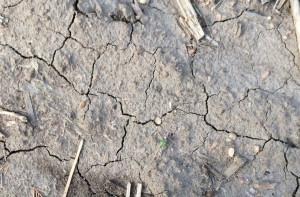Effects of Dry Winter Weather on Nebraska Farmland
 It’s planting season across the Midwest, and Nebraska farmers are eager to get their crops into the ground. A colder than normal winter with low levels of snowfall has left soil moisture at a premium, and while recent rainfall is a welcome remedy to lower than optimal soil moisture, the rain and cool temperatures are also doing their best to reign in planting across the area.
It’s planting season across the Midwest, and Nebraska farmers are eager to get their crops into the ground. A colder than normal winter with low levels of snowfall has left soil moisture at a premium, and while recent rainfall is a welcome remedy to lower than optimal soil moisture, the rain and cool temperatures are also doing their best to reign in planting across the area.
According to some, the rain that has fallen over Nebraska farmland the last week has been in areas which have needed it less, and as a result, the drought conditions in many parts of the Midwest remain. While this might allow planters to move, temperatures remain unseasonably cool, and many farmers are reluctant to plant when such low temperatures could affect the viability of the seed in the ground. This phenomenon, called “imbibitional chilling,” can occur when the seed takes in water that is too cold, and is damaged as a result.
Corn and soybeans are at greatest risk of being damaged due to cold soil temperatures within the first 24 to 48 hours of being planted, this according to University of Nebraska Lincoln CropWatch analysts. To reduce the risks of imbibitional chilling, they advise to plant when soil temperatures are in the high 40s, and the weather forecast for the subsequent 48 hours is higher.
CropWatch analysts also stress that while cooler soil temperatures are a threat to seed health, for soybeans, cold soil temperatures combined with high soil moisture content pose an even greater risk. “Cold soil delays the time between germination and emergence, but cold soil plus saturated soil conditions can substantively reduce soybean and corn emergence because soil-borne pathogens thrive in water-saturated soil.” Thus, they say, since the cold temperatures delay germination and emergence, the pathogens have more time to infect the seed, and as such, they highly advise the use of a fungicide seed treatment if planting in cold, wet conditions.
Area producers are also encouraged to assess the condition of their alfalfa fields after the cold, windy, and dry winter. Lack of snowfall left little protection for many alfalfa stands, and while some fields seem to have come through okay, other farmers are reported significant winter kill. Many may decide to turn these fields over to corn should the damage be too great.
After the late spring planting of 2013, farmers are anxious to be in the fields consistently, but it appears that the odds of having an “on time” corn crop across the area are shrinking. According to Agriculture.com’s Jeff Caldwell, the average date after which planting is considered late is May 20th. That leaves producers roughly three weeks to get approximately 80% of the corn crop into the ground. “Of the 21 days left, history teaches us your chances of having even half of that time under conditions favorable for planting corn aren’t the greatest,” says Caldwell.
As usual, Mother Nature will have the last word. If temperatures ever decide to move into the normal May averages, and should periods of moisture hold off, great gains can and will be made in planting progress. Do you have unanswered questions regarding your planting progress, or your land and crops? Feel free to contact UFARM at your convenience.
Sources:
“Factors Influencing Cold Stress in Corn and Soybeans.” CropWatch. University of Nebraska Lincoln Extension. 25 Apr 2014. Web. 01 May 2014.
Caldwell, Jeff. “The Shrinking Odds of An On-Time Corn Crop.” Agriculture.com. 30 Apr 2014. Web. 01 May 2014.

